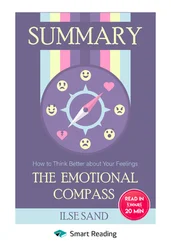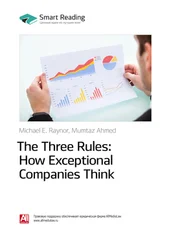Pinker, S. (1997) . How the mind works. New York: W. W. Norton.
Pohl, R. (Ed.). (2004) . Cognitive illusions: A handbook on fallacies and biases in thinking, judgment and memory. Hove, England: Psychology Press.
Popper, K. R. (1959) . The logic of scientific discovery. New York: Harper & Row.
Popper, K. R. (1963) . Conjectures and refutations. New York: Harper & Row.
Popper, K. R. (1972) . Objective knowledge. Oxford, England: Oxford University Press.
Popper, K. R. (1976) . Unended quest: An intellectual biography. La Salle, IL: Open Court.
Postman, N. (1988) . Conscientious Objections. New York: Vintage Books.
Powell, B. (1993, December). Sloppy reasoning, misused data.
Phi Delta Kappan, 75(4), 283, 352. Powell, B., & Steelman, L. C. (1996) . Bewitched, bothered, and bewildering: The use and misuse of state SAT and ACT scores. Harvard Educational Review, 66, 27–59.
Pressley, M. (2005) . Reading instruction that works: The case for balanced teaching (3rd ed.). New York: Guilford Press.
Price, E. (2009, July). Behavioral research can help curb swine flu. APA Monitor, p. 11.
Rabin, R. (2009, June 16). Alcohol’s good for you? Some scientists doubt it. New York Times, p. D1.
Radcliffe Richards, J. (2000) . Human nature after Darwin: A philosophical introduction. London: Routledge.
Radford, B. (2005) .
Ringing false alarms: Skepticism and media scares. Skeptical Inquirer, 29(2), 34–39. Radford, B. (2006) . Geller revisited. Skeptical Inquirer, 30(1), 27.
Radford, B. (2009) . Psychic exploits horrific abduction case. Skeptical Inquirer, 33(6), 6–7.
Radford, B. (2010) . The psychic and the serial killer. Skeptical Inquirer, 34(2), 32–37.
Radford, B. (2011) . Left brained or right brained. Skeptical Inquirer, 35(1), 22.
Raine, A. (2008) . From genes to brain to antisocial behavior. Current Directions in Psychological Science, 17, 323–328.
Rajendran, G., & Mitchell, P. (2007) . Cognitive theories of autism. Developmental Review, 27, 224–260.
Randall, L. (2005, September 18). Dangling particles. New York Times, p. WK13.
Randi, J. (1995) . An encyclopedia of claims, frauds, and hoaxes of the occult and supernatural exposed by James Randi. New York: St. Martin’s Press.
Randi, J. (2005) . Fakers and innocents: The one million dollar challenge and those who try for it. Skeptical Inquirer, 29(4), 45–50.
Randi, J. (2011) . Twas brillig: Trying to give away a million dollars. Skeptic Magazine, 16(4), 8–9.
Redberg, R. (2011, May 26). Squandering Medicare’s money. New York Times, p. A27.
Redelmeier, D. A., & Tibshirani, R. J. (2001) . Car phones and car crashes: Some popular misconceptions. Canadian Medical Association Journal, 164(11), 1581–1582.
Regnier, P. (2010, January). Can you outsmart the market? Money, pp. 86–91.
Reis, H. T., Maniaci, M. R., Caprariello, P. A., Eastwick, P. W., & Finkel, E. J. (2011) . Familiarity does indeed promote attraction in live interaction. Journal of Personality and Social Psychology, 101, 557–570.
Riener, C., Proffitt, D. R., & Salthouse, T. (2005) . A psychometric approach to intuitive physics. Psychonomic Bulletin and Review, 12, 740–745.
Rind, B. (2008) . The Bailey affair: Political correctness and attacks on sex research. Archives of Sexual Behavior, 37, 481–484.
Robins, R. W., Gosling, S. D., & Craik, K. H. (1999) . An empirical analysis of trends in psychology. American Psychologist, 54, 117–128.
Rosenthal, R. (1990) . How are we doing in soft psychology? American Psychologist, 46, 775–776.
Ross, L., & Nisbett, R. E. (1991) . The person and the situation: Perspectives of social psychology. Philadelphia: Temple University Press.
Rouder, J., & Morey, R. (2011) . A Bayes factor meta-analysis of Bem’s ESP claim. Psychonomic Bulletin & Review, 18, 682–687.
Rozin, P. (2006) . Domain denigration and process preference in academic psychology. Perspectives on Psychological Science, 1, 365–376.
Rozin, P. (2007) . Exploring the landscape of modern academic psychology: Finding and filling the holes. American Psychologist, 62, 754–765.
Rozin, P. (2009) . What kind of empirical research should we publish, fund, and reward? Perspectives on Psychological Science, 4, 435–439.
Ruse, M. (1999) . Mystery of mysteries: Is evolution a social construction? Cambridge, MA: Harvard University Press.
Russo, F. (1999, May). The clinical-trials bottleneck. The Atlantic Monthly, pp. 30–36.
Rutter, M. (1979) . Maternal deprivation, 1972–1978: New findings, new concepts, and new approaches. Child Development, 50, 283–305.
Sagan, C. (1996) . The demon-haunted world: Science as a candle in the dark. New York: Random House.
Salthouse, T. A. (2012) . Consequences of age-related cognitive declines. Annual Review of Psychology, 63, 201–226.
Saul, S. (2010, July 20). Prone to error: Earliest steps to find cancer. New York Times, pp. A1–A14.
Scahill, L., et al. (2006) . Contemporary assessment and pharmacotherapy of Tourette syndrome. NeuroRx, 3, 192–206.
Schaie, K. W., & Willis, S. (Eds.). (2010) . Handbook of the psychology of aging (7th ed.).
San Diego: Academic Press. Scholl, S. G., & Greifeneder, R. (2011) . Disentangling the effects of alternation rate and maximum run length on judgments of randomness. Judgment and Decision Making, 6, 531–541.
Schwartz, M. (2008, December). The golden touch. Harper’s Magazine, 317, pp. 71–78.
Scott, E. C. (2005) . Evolution vs. creationism. Berkeley, CA: University of California Press.
Scott, S. (1999, January 2). Risking all on alternative cancer therapies. National Post (Toronto), p. B1.
See, J. (2006, May). When 007 meets Ph.D. APS Observer, 19(5), 15.
Seethaler, S. (2009) . Lies, damned lies, and science. Upper Saddle River, NJ: Pearson Education.
Seife, C. (2010) . Proofiness: The dark arts of mathematical deception. New York: Viking.
Senechal, M. (2006) . Testing the home literacy model: Parent involvement in kindergarten is differentially related to Grade 4 reading comprehension, fluency, spelling, and reading for pleasure. Scientific Studies of Reading, 10, 59–88.
Seppa, N. (2006, January 14). Put down that fork: Studies document hazards of obesity. Science News, 169, 21.
Shadish, W. R., & Baldwin, S. A. (2005) . Effects of behavioral marital therapy: A meta-analysis of randomized controlled trials. Journal of Consulting and Clinical Psychology, 73, 6–14.
Shaffer, R., & Jadwiszczok, A. (2010) . Psychic defective: Sylvia Browne’s history of failure. Skeptical Inquirer, 34(2), 38–42.
Shapin, S. (2006, November 6). Sick city: Maps and mortality in the time of cholera. The New Yorker, pp. 110–115.
Shapiro, A., Shapiro, E., Bruun, R., & Sweet, R. (1978) . Gilles de la Tourette syndrome. New York: Raven Press.
Sharot, T. (2011) . Optimism bias. New York: Pantheon.
Shaywitz, S. E., & Shaywitz, B. A. (2004) . Neurobiologic basis for reading and reading disability. In P. McCardle & V. Chhabra (Eds.), The voice of evidence in reading research (pp. 417–442). Baltimore: Paul Brookes.
Sheese, B. E., & Graziano, W. G. (2005) . Deciding to defect: The effects of video-game violence on cooperative behavior. Psychological Science, 16, 354–357.
Shepard, R. (1983) . “Idealized” figures in textbooks versus psychology as an empirical science. American Psychologist, 38, 855.
Shermer, M. (2005) . Science friction: Where the known meets the unknown. New York: Times Books.
Shermer, M. (2006) . Why Darwin matters: The case against intelligent design. New York: Times Books.
Shermer, M. (2011) . The believing brain. New York: Times Books.
Sielski, M. (2010, November 17). Rethinking quarterback stats. Wall Street Journal, p. D6.
Читать дальше












